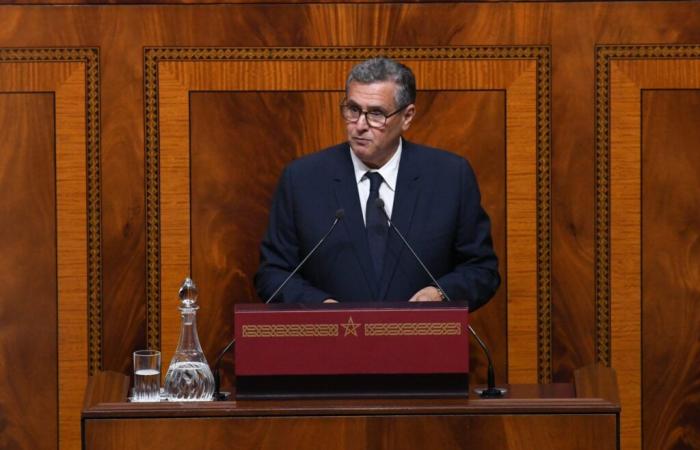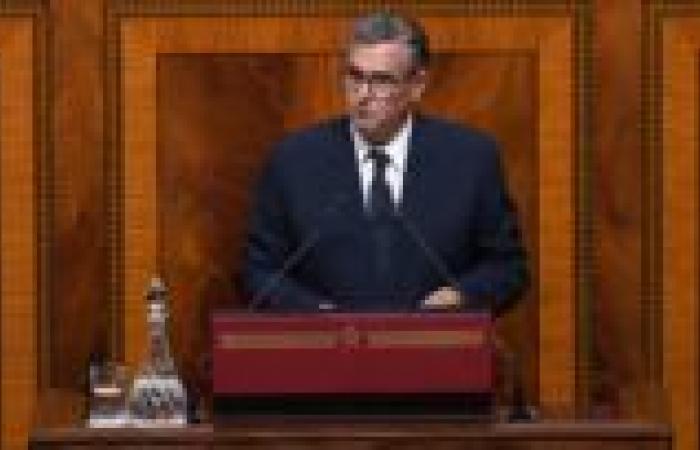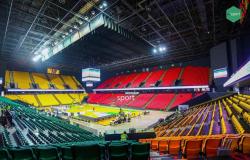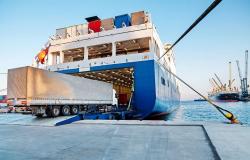Morocco continues to strengthen its presence on international markets with exports reaching 331 billion dirhams (billion dirhams) at the end of September 2024, affirmed Head of Government Aziz Akhannouch during the monthly oral questions session in the House of Representatives.
The figures revealed by Mr. Akhannouch reveal an increase of 5.3% (+16.8 billion dirhams) compared to the same period in 2023. This increase is explained by increased demand for Moroccan products, particularly in the sectors of automobiles and aeronautics, two strategic pillars of the country’s economy. The Head of Government stressed that this growth demonstrates the Kingdom’s continued efforts to balance its trade balance and diversify its exports, thanks to a proactive industrial and commercial development policy.
The automobile still the Kingdom’s leading export sector
The automotive sector in Morocco stands out as the main driver of exports. In 2023, it recorded an exceptional year, with an increase of more than 28%, an increase of around 33 billion dirhams compared to the previous year. This dynamic continued in 2024, with growth of 7% during the first nine months, bringing the total value of automobile exports to MAD 115.4 billion.
The expansion of the automotive sector is supported by the presence of large international companies and a well-integrated value chain in Morocco, which supplies not only cars but also components, including wiring, assembly parts and other technical elements sophisticated. Mr. Akhannouch specified that the government actively supports this sector by setting up suitable infrastructure, dedicated industrial zones and incentives to attract more foreign investment.
Another key sector of Moroccan industry, aeronautics also recorded solid growth with a 20% increase in its exports at the end of September 2024. The rise of this industry is largely due to foreign investments and the creation of new production centers. Major global brands have chosen Morocco as a production hub for the region, taking advantage of the country’s political and economic stability as well as increasingly qualified local skills in this area.
The Head of Government highlighted the 31% growth in sales in the assembly category, which reached 12.9 billion dirhams. Cabling systems are also in high demand, reflecting the move upmarket of Moroccan industry towards higher value-added products.
Morocco, the world’s leading exporter of phosphate and its derivatives, saw its exports in this sector increase by 11.3% during the first nine months of the year, to reach 60 billion dirhams. This increase reflects both sustained global demand for this strategic mineral and the country’s efforts to diversify its commercial outlets.
Agriculture and the agri-food industry also remain major assets of Moroccan foreign trade. Although the country has experienced successive years of drought, agricultural exports reached a value of 62.2 billion dirhams at the end of September 2024. This positions the agricultural sector in second place in national exports, particularly thanks to exports of fresh and processed products. . To reinforce this trend, the government is investing in infrastructure such as water desalination units, including that of Dakhla, which should irrigate 5,000 hectares of new agricultural land by the end of 2025.
Strategic diversification towards new markets
During his speech, Mr. Akhannouch highlighted the Moroccan policy of opening up to new markets. The government has taken several initiatives to strengthen its trade relations with its traditional partners while exploring new horizons, particularly in Africa, Europe and Asia. This strategy allows Morocco to diversify its export portfolio and limit its dependence on certain markets.
Signing trade agreements and strategic partnerships is a priority as the country seeks to become a regional hub for international trade. According to Mr. Akhannouch, this approach opens the way to “win-win partnerships”, strengthening Morocco’s place as an economic crossroads in Africa and the Middle East.
While exports are recording strong growth, the government has also strived to contain imports at reasonable levels, reaching 554 billion dirhams at the end of September 2024. Among the declining items, energy imports, which fell by almost 6 % due to lower demand for coal and hydrocarbons.
The government continues to ensure control of imports of raw and finished products, while adapting economic policy to further promote national exports. This approach made it possible to improve the coverage rate of the trade balance, which increased from 57.8% in 2019 to around 60% in 2024, reflecting a positive trend.
Foreign direct investments (FDI) play a central role in Morocco’s economic development. During the first nine months of 2024, FDI generated MAD 16.3 billion, up 50.7% compared to the previous year. Among the flagship projects is an investment of 3 billion dirhams in the manufacturing of electric batteries, which should create 2,500 jobs. In addition, a memorandum of understanding was signed for the creation of the first African factory for the production of batteries for electric cars, a project worth 65 billion dirhams.
The tourism sector is also experiencing positive dynamics, with revenues of MAD 87.1 billion at the end of September, an increase of 8.4% compared to 2023. The number of tourists reached 13.1 million, a record level which reflects of the growing popularity of Morocco as an international destination.
Despite global economic challenges, the Moroccan government was able to reduce the current account deficit, reaching a historically low level of MAD 9 billion in 2023. The average annual growth rate amounts to 4.4% over the last three years, testifying to the resilience of the Moroccan economy in the face of economic and geopolitical crises. The Head of Government concluded by reaffirming the government’s commitment to supporting growth through structural reforms.
LNT
Share this article:







